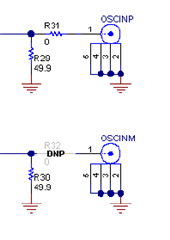I have an LMX2694EPEVM that I am attempting to output 3GHz. the output frequency is a few MHz off and continues to drift as time goes on. I also have large 2nd and 3rd order harmonics. The reference oscillator is a 10MHz signal from an FSVA3013. This is a very clean reference so I'm a bit confused about frequency drift/accuracy on the output.
-
Ask a related question
What is a related question?A related question is a question created from another question. When the related question is created, it will be automatically linked to the original question.



